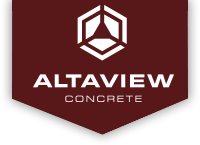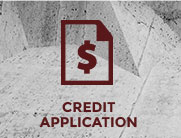LEED
WHY BOTHER WITH SUSTAINABILITY?
Altaview Concrete has made conscious efforts to address its own role within the greater environment by a variety of means and methods. This new maintenance facility is among the first of our strategies to move towards a more sustainable future.
One way that this project has begun to approach sustainability is through the implementation of the USGBC’s LEED Certification Program. LEED or Leadership in Energy & Environmental Design, is a voluntary green building rating system, designed to evaluate environmental performance from a whole building perspective over a building’s life cycle, providing a definitive standard for what constitutes a sustainable or “green” design.
INCORPORATING SUSTAINABILITY:
While there are any number of ways to approach sustainability, the LEED certification program uses five main categories:
Sustainable Sites (SS)
Water Efficiency (WE)
Energy & Atmosphere (EA)
Materials & Resources (MR)
Indoor Environmental Quality (EQ)
Each category contains a series of credits which also contain specific requirements for obtaining the points associated with each credit and ultimately, an established certification level. By participating in this process, it is our intent that WESTROC will emerge as part of the solution rather than a source of the environmental and social problems we face today.
BENEFITING FROM SUSTAINABILITY:
Green building practices can substantially reduce or eliminate negative environmental impacts and improve existing design, construction and operational practices.
For example, under the SS section, we are accommodating alternative transportation vehicles as well as retaining 100% of storm water on site, which increases aquifer recharge. We’ve utilized environmentally friendly envirocore cement in all our project concrete mixes in some cases also reducing Heat Island Effect. Also, our exterior lighting reduces light pollution at night.
Under Water Efficiency, we have reduced landscape water to zero by using plants that are indigenous to Utah. Building water use was shrunk by 40% with water reducing fixtures and strategies. In the EA section, this facility received third party commissioning of all HVAC, electrical and hot water systems. The building uses energy efficiency measures to reduce energy costs such as utilizing thermal mass from the concrete stem walls to assist cooling and heating year round. HVAC refrigerants have been minimized and contain no CFCs (an ozone depleting chemical). We are also purchasing green power with the local power company in support of renewable energy.
Within the M&R section, we have implemented a facility recycling program. During construction we insured as much debris as possible was diverted from landfills. We have made extra efforts to insure that the recycled and regional materials content of the building were substantial. Also, any framing lumber is Forest Stewardship Council certified.
Aside from some of the established means for certification we have shown innovative initiative by not only meeting, but substantially exceeding, established LEED benchmarks. We are also making an effort to educate the general public where possible. And perhaps the most innovative feature is the use of waste truck oil as a fuel source for the building’s heating systems. In other words, green design has environmental, economic and social elements that benefit all building stakeholders, including owners, occupants and the general public.oday.

SUSTAINABLE SITES (SS):
- Construction Pollution Prevention
- Site Selection
- Alternative Transportation
- Sotrm Water Management
- Heat Island Effect
- Light Pollution Reduction
WATER EFFICIENCY (WE):
- Water Effiicient Landscaping
- Water Use Reduction
ENERGY & ATMOSPHERE (EA):
- Building Commissioning
- Optimied Energy Performance
- Enhanced Refrigerant Management
- Green Power
MATERIALS & RESOURCES (MR):
- Collection of Recyclables
- Construciton Waste Management
- Recycled Content
- Regional Materials
- Certified Wood
INDOOR ENVIRONMENTAL QUALITY (EQ):
- Indoor Air Quality (IAQ) Performance
- Environmental Smoke Control
- Outdoor Air Delivery Monitoring
- Increased Ventilation
- Construction IAQ Management Plans
- Low-Emitting Materials
- Indoor Chemical & Pollutant Control
- Controllability of Systems
- Thermal Comfort
- Daylighting & Views
INNOVATION IN DESIGN (ID):
- Waste Oil Burning Heaters
- Educational Outreach
- Exceeding LEED Standards








